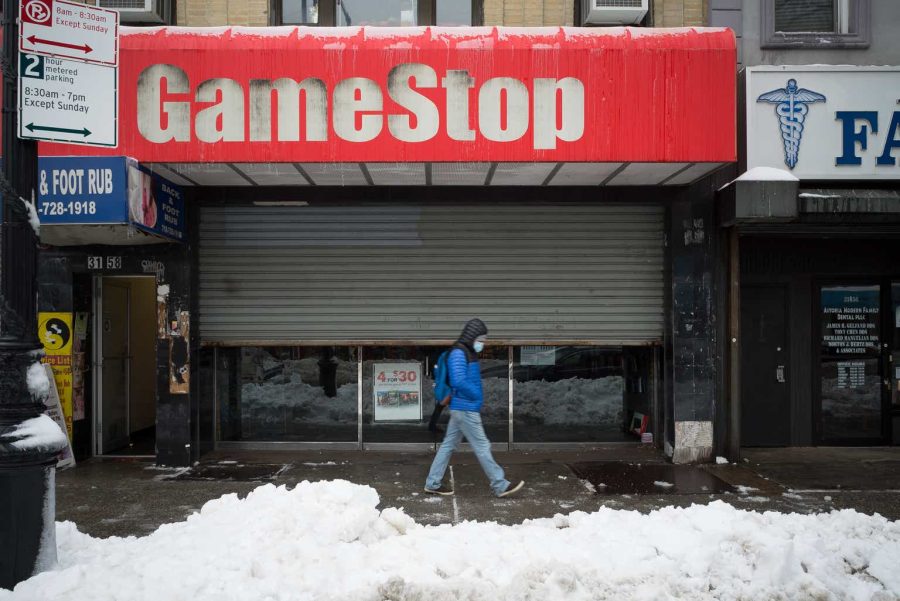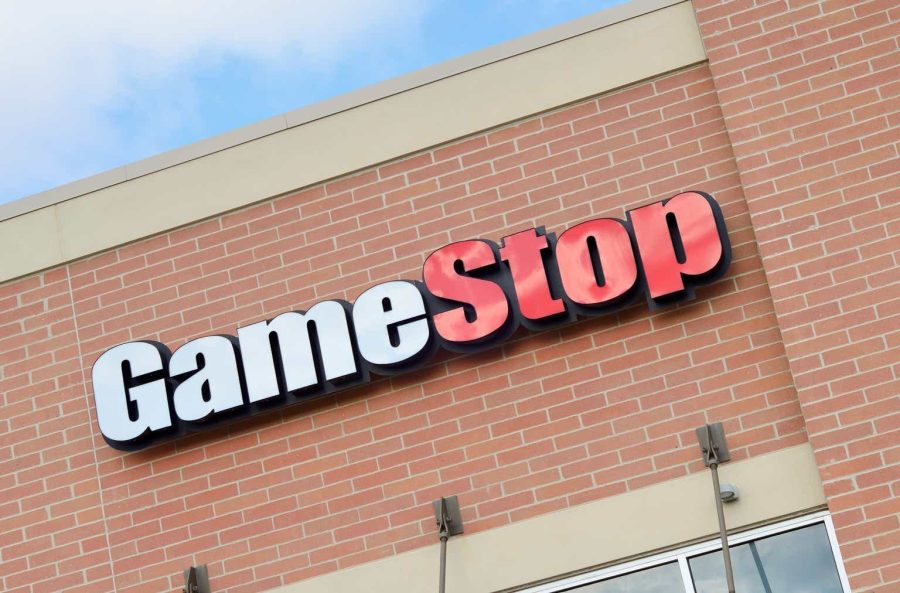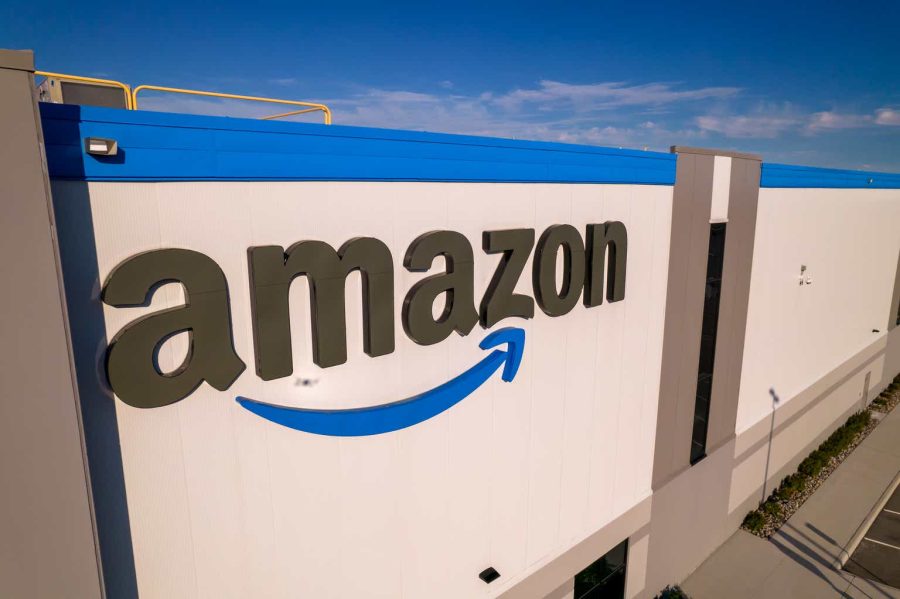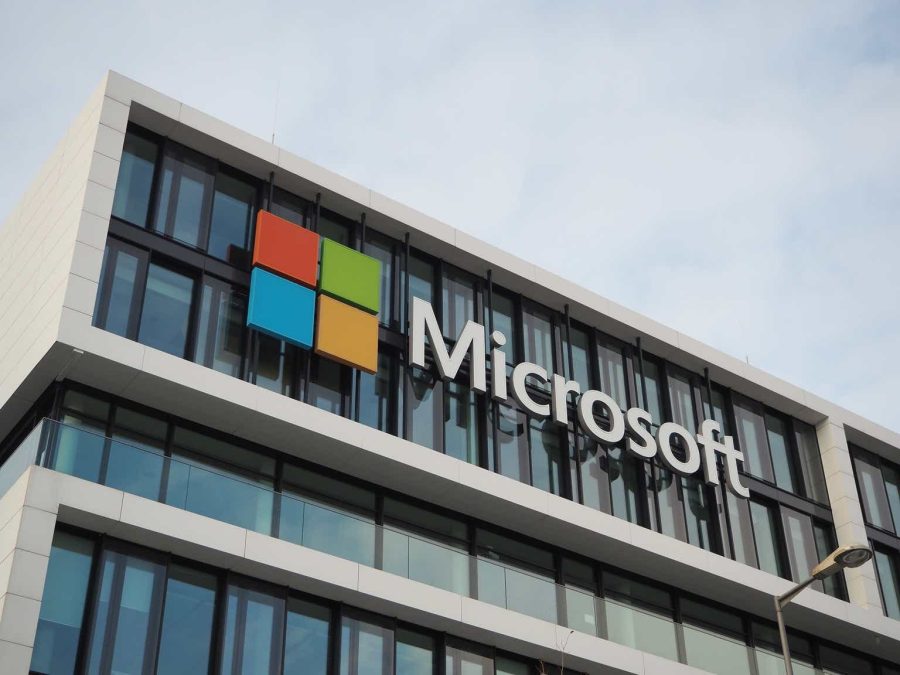July 14, 2024 This Week Top S&P 500 Gainers & Losers
Tesla Q2: The Bottom Is Likely In
Tesla: Time To Take Profits
Microsoft: The Q4 Results Should Surprise You
Tesla: Optimus And FSD Probably Won’t Save The Day
April 23, 2024 Maximizing Profits: When is the Right Time to Sell Your Business?
April 12, 2024 Improve Your Financial Status: A How-To Guide
April 12, 2024 How ZIM Integrated Container Tracking is Revolutionizing Global Trade
March 15, 2024 6 Best Growth Stocks To Buy Now According to Metatrader 5

GameStop (GME) Stock Forecast for 2024–2028. Sell or Buy?
Updated: July 27, 2024 (06:52)
Sector: Consumer cyclicalThe share price of GameStop Corp. (GME) now
50/200 Day Moving Average: $26.17 / $17.1
This figure corresponds to the Average Price over the previous 50/200 days. For GameStop stocks, the 50-day moving average is the resistance level today.
For GameStop stocks, the 200-day moving average is the support level today.
Are you interested in GameStop Corp. stocks and want to buy them, or are they already in your portfolio? If yes, then on this page you will find useful information about the dynamics of the GameStop stock price in 2024, 2025, 2026, 2027, 2028. How much will one GameStop share be worth in 2024 - 2028?
When should I take profit in GameStop stock? When should I record a loss on GameStop stock? What are analysts' forecasts for GameStop stock? What is the future of GameStop stock? We forecast GameStop stock performance using neural networks based on historical data on GameStop stocks. Also, when forecasting, technical analysis tools are used, world geopolitical and news factors are taken into account.
GameStop stock prediction results are shown below and presented in the form of graphs, tables and text information, divided into time intervals. (Next month, 2024, 2025, 2026, 2027 and 2028) The final quotes of the instrument at the close of the previous trading day are a signal to adjust the forecasts for GameStop shares. This happens once a day.
Historical and forecast chart of GameStop stock
The chart below shows the historical price of GameStop stock and a prediction chart for the next month. For convenience, prices are divided by color. Forecast prices include: Optimistic Forecast, Pessimistic Forecast, and Weighted Average Best Forecast. Detailed values for the GameStop stock price can be found in the table below.
Long-term forecasts by years.

GameStop Stock Forecast: The Key Influencers Shaping GME's Future
Forecasting GameStop (GME) stock rates involves analyzing several crucial factors that significantly impact its valuation. As GME navigates a volatile market, understanding these elements can help analysts make the most accurate predictions.
Critical Influences on GME Stock Rates
One major factor is GameStop’s lack of a turnaround plan. Without a clear strategy to revitalize its core business, the company faces continuous sales declines, raising investor uncertainty. This issue, coupled with the shifting landscape towards digital game sales, poses a significant challenge.
The volatile stock behavior is another key influencer. GameStop remains a meme stock, attracting speculative behavior that leads to dramatic price swings based on market sentiment rather than fundamentals. Such unpredictability discourages long-term investments and adds substantial risk.
Additionally, the ongoing decline in GameStop's business core is a pressing concern, with falling sales reflecting challenges in competing with digital sales platforms. Analysts watching this trend can gauge investor sentiment and stock valuation projections based on these sales trajectories.
Share dilution also plays a critical role. The doubling of outstanding shares since 2021 divides ownership among more shareholders, leading to value dilution and a potential decrease in stock prices.
Lastly, GameStop’s high cash position offers both opportunities and drawbacks. While it provides a buffer for operating losses and potential strategic investments, the lack of clear management plans tempers its positive impact on stock enthusiasm.
In essence, analysts forecasting GameStop's stock price must consider:
- The presence or absence of a turnaround plan
- The stock's inherent volatility
- Trends in declining business operations
- Impacts of share dilution
- Utilization of high cash reserves
By evaluating these factors, analysts can provide more comprehensive GME stock forecasts and predict price targets with greater precision. Understanding these critical influences allows for a nuanced approach that recognizes both risks and potential opportunities in GameStop's future.
Review the original Analysis

GameStop Stock Forecast: Navigating Through Uncertainty
The volatile saga of GameStop (GME) stock continues to keep investors on their toes, with speculations about its future rife across forecasting platforms. The immediate trajectory of GME stock rates seems to be hanging by the thread of several key factors that analysts are closely watching. Central to these are investor sentiment and speculative trading, the company's financial performance and business prospects, and its growing cash reserve alongside its potential interest income from such.
Crucial Factors Affecting GME's Future
Skeptics and enthusiasts alike ponder over whether GME is a good stock to buy, often citing its unpredictable stock price movements fueled by investor euphoria. This speculation has turned GME into a battleground for retail and institutional investors, making the GameStop stock forecast a challenging puzzle. However, the real crux lies in the company's financial health and business model adaptability. Analysts focusing on GME stock price predictions scrutinize sales trends, operational efficiencies, and strategic pivots away from declining sectors. Additionally, GameStop's swelling cash balance—buoyed by asset sales and market maneuvers—offers a temporary cushion. How the company invests this, potentially in U.S. Treasuries as speculated, may offer a new source of interest income but doesn't solve underlying business challenges.
For a GME stock forecast to be accurate, analysts must weigh these factors meticulously. The question of "Is GME a good stock to buy?" thus becomes intricate, hinging not just on momentary market sentiments but on a holistic view of GameStop's path forward. With such dynamics at play, the GME stock price prediction remains a riveting narrative, with investors and analysts alike keen to decode its next chapter. As we hover over the buy or sell GameStop stock dilemma, the unfolding events in the near term will undoubtedly shape the discourse around GME stock price target discussions, making the forecasting an art as much as a science.
Review the original Analysis

GameStop Stocks: Navigating Through Turbulence
Predicting the future rates of GameStop (GME) stocks is akin to navigating a ship through stormy waters, given the multitude of factors at play. The upcoming changes in GME's stock rate appear to be influenced heavily by events tied to its underlying weak business performance, short interest ratio, equity raise and dilution, and current overvaluation. Each of these elements plays a crucial role in developing a GME stock forecast that can guide investors in making informed decisions.
Understanding the Influences for Accurate Forecasts
The heart of the matter lies in the declining revenues and net income, signifying troubled waters for GameStop's business model. This fundamental weakness is a stark signal for investors, potentially leading to a negative impact on GME stock prices in the eyes of an analyst working on a GameStop stock forecast. Meanwhile, the waters are churned further by the impressive short interest ratio. Herein lies the potential for a short squeeze, which could prompt a short-lived rally, making GME stock price predictions very dynamic.
In parallel, GameStop's strategy of raising capital through equity has brought dilution into the mix, introducing pressure that could sway the GME stock price target downwards. Such actions, coupled with the company's unjustifiably high valuation, create a perfect storm for investors. Analysts aiming to provide a credible GME stock buy or sell recommendation must weigh these factors judiciously.
An accurate forecast hinges on an analyst's ability to balance these competing elements, understanding their long-term vs. short-term impacts, and integrating them into a coherent analysis. The question of "Is GME a good stock to buy?" cannot be answered without considering the interplay of these factors. Whether advising to buy or sell GameStop stock, the analyst's predictions must navigate through the complex dynamics of GME’s stock price prediction with precision.
Review the original Analysis
GameStop Corporation specializes in electronic games and entertainment software stores throughout the United States, Australia, Canada, and Europe. In addition, the company’s stores sell new and used play equipment and accessories.
GameStop daily forecast for a month
| Date | Target | Pes. | Opt. | Vol., % |
|---|---|---|---|---|
| Jul 29 | 28.02 | 27.19 | 30.13 | 10.82 |
| Jul 30 | 29.78 | 27.11 | 32.24 | 18.91 |
| Jul 31 | 26.20 | 24.44 | 27.96 | 14.41 |
| Aug 01 | 25.43 | 24.71 | 27.28 | 10.37 |
| Aug 02 | 25.14 | 23.80 | 27.75 | 16.56 |
| Aug 03 | 28.20 | 25.99 | 29.74 | 14.43 |
| Aug 04 | 29.35 | 26.51 | 30.75 | 15.96 |
| Aug 05 | 27.42 | 24.81 | 28.45 | 14.70 |
| Aug 06 | 28.15 | 26.41 | 31.26 | 18.35 |
| Aug 07 | 30.04 | 28.73 | 31.17 | 8.49 |
| Aug 08 | 26.17 | 24.56 | 28.44 | 15.81 |
| Aug 09 | 25.33 | 23.52 | 27.70 | 17.79 |
| Aug 10 | 28.27 | 27.16 | 29.85 | 9.91 |
| Aug 11 | 30.21 | 28.01 | 33.17 | 18.42 |
| Aug 12 | 29.40 | 27.43 | 32.57 | 18.76 |
| Aug 13 | 29.90 | 29.06 | 31.87 | 9.65 |
| Aug 14 | 31.03 | 27.64 | 32.68 | 18.23 |
| Aug 15 | 31.29 | 28.05 | 34.31 | 22.33 |
| Aug 16 | 31.64 | 29.12 | 34.87 | 19.78 |
| Aug 17 | 28.67 | 25.74 | 30.48 | 18.40 |
| Aug 18 | 29.76 | 28.84 | 31.63 | 9.68 |
| Aug 19 | 27.13 | 25.80 | 28.61 | 10.89 |
| Aug 20 | 25.31 | 22.90 | 27.36 | 19.50 |
| Aug 21 | 26.87 | 24.69 | 28.82 | 16.76 |
| Aug 22 | 29.46 | 27.69 | 32.27 | 16.54 |
| Aug 23 | 31.53 | 28.97 | 34.70 | 19.81 |
| Aug 24 | 28.57 | 25.69 | 30.69 | 19.46 |
| Aug 25 | 26.13 | 23.46 | 27.52 | 17.31 |
| Aug 26 | 27.81 | 25.71 | 29.80 | 15.90 |
| Aug 27 | 24.00 | 22.95 | 26.01 | 13.32 |
GameStop Daily Price Targets
GameStop Stock Forecast 07-29-2024.
Forecast target price for 07-29-2024: $28.02.
Positive dynamics for GameStop shares will prevail with possible volatility of 9.762%.
Pessimistic target level: 27.19
Optimistic target level: 30.13
GameStop Stock Forecast 07-30-2024.
Forecast target price for 07-30-2024: $29.78.
Positive dynamics for GameStop shares will prevail with possible volatility of 15.906%.
Pessimistic target level: 27.11
Optimistic target level: 32.24
GameStop Stock Forecast 07-31-2024.
Forecast target price for 07-31-2024: $26.20.
Negative dynamics for GameStop shares will prevail with possible volatility of 12.594%.
Pessimistic target level: 24.44
Optimistic target level: 27.96
GameStop Stock Forecast 08-01-2024.
Forecast target price for 08-01-2024: $25.43.
Negative dynamics for GameStop shares will prevail with possible volatility of 9.396%.
Pessimistic target level: 24.71
Optimistic target level: 27.28
GameStop Stock Forecast 08-02-2024.
Forecast target price for 08-02-2024: $25.14.
Negative dynamics for GameStop shares will prevail with possible volatility of 14.208%.
Pessimistic target level: 23.80
Optimistic target level: 27.75
GameStop Stock Forecast 08-03-2024.
Forecast target price for 08-03-2024: $28.20.
Positive dynamics for GameStop shares will prevail with possible volatility of 12.611%.
Pessimistic target level: 25.99
Optimistic target level: 29.74
GME (GME) Monthly Stock Prediction for 2024
| Month | Target | Pes. | Opt. | Vol., % |
|---|---|---|---|---|
| Aug. | 21.78 | 16.88 | 23.41 | 27.91 |
| Sep. | 25.96 | 20.20 | 29.85 | 32.35 |
| Oct. | 26.89 | 24.88 | 32.30 | 22.98 |
| Nov. | 22.54 | 19.56 | 26.12 | 25.11 |
| Dec. | 16.11 | 14.71 | 17.85 | 17.60 |
GameStop forecast for this year
GameStop Stock Prediction for Aug 2024
An downtrend is forecast for this month with an optimal target price of $21.7771. Pessimistic: $16.88. Optimistic: $23.41
GameStop Stock Prediction for Sep 2024
An uptrend is forecast for this month with an optimal target price of $25.9583. Pessimistic: $20.20. Optimistic: $29.85
GameStop Stock Prediction for Oct 2024
An uptrend is forecast for this month with an optimal target price of $26.8928. Pessimistic: $24.88. Optimistic: $32.30
GameStop Stock Prediction for Nov 2024
An downtrend is forecast for this month with an optimal target price of $22.5361. Pessimistic: $19.56. Optimistic: $26.12
GameStop Stock Prediction for Dec 2024
An downtrend is forecast for this month with an optimal target price of $16.1133. Pessimistic: $14.71. Optimistic: $17.85
GameStop (GME) Monthly Stock Prediction for 2025
| Month | Target | Pes. | Opt. | Vol., % |
|---|---|---|---|---|
| Jan | 17.27 | 15.93 | 20.64 | 22.84 |
| Feb | 14.79 | 12.57 | 17.05 | 26.28 |
| Mar | 16.07 | 12.94 | 17.71 | 26.95 |
| Apr | 15.49 | 13.59 | 16.56 | 17.96 |
| May | 20.14 | 18.93 | 24.31 | 22.12 |
| Jun | 17.54 | 14.81 | 21.28 | 30.42 |
| Jul | 16.54 | 14.21 | 19.07 | 25.50 |
| Aug | 20.56 | 18.84 | 22.23 | 15.26 |
| Sep | 25.01 | 19.15 | 27.03 | 29.14 |
| Oct | 21.70 | 19.23 | 24.24 | 20.68 |
| Nov | 24.31 | 22.63 | 28.03 | 19.25 |
| Dec | 30.36 | 24.35 | 32.82 | 25.81 |
GameStop (GME) Monthly Stock Prediction for 2026
| Month | Target | Pes. | Opt. | Vol., % |
|---|---|---|---|---|
| Jan | 32.28 | 24.53 | 38.47 | 36.24 |
| Feb | 38.76 | 36.20 | 42.48 | 14.78 |
| Mar | 38.53 | 34.83 | 44.43 | 21.60 |
| Apr | 41.42 | 31.98 | 44.15 | 27.58 |
| May | 43.28 | 35.62 | 50.30 | 29.17 |
| Jun | 42.12 | 36.94 | 51.84 | 28.76 |
| Jul | 38.58 | 31.17 | 47.26 | 34.04 |
| Aug | 37.88 | 35.04 | 41.52 | 15.60 |
| Sep | 33.79 | 28.01 | 39.27 | 28.66 |
| Oct | 40.48 | 34.90 | 48.62 | 28.23 |
| Nov | 29.67 | 25.31 | 32.79 | 22.81 |
| Dec | 20.77 | 17.28 | 23.83 | 27.46 |
GameStop (GME) Monthly Stock Prediction for 2027
| Month | Target | Pes. | Opt. | Vol., % |
|---|---|---|---|---|
| Jan | 22.58 | 17.50 | 27.73 | 36.89 |
| Feb | 24.00 | 18.24 | 27.60 | 33.91 |
| Mar | 24.51 | 21.12 | 29.43 | 28.23 |
| Apr | 26.12 | 19.85 | 29.34 | 32.32 |
| May | 29.65 | 23.51 | 33.03 | 28.82 |
| Jun | 25.74 | 22.34 | 27.43 | 18.57 |
| Jul | 26.74 | 20.96 | 33.16 | 36.77 |
| Aug | 33.16 | 28.48 | 37.63 | 24.32 |
| Sep | 29.28 | 22.87 | 34.11 | 32.96 |
| Oct | 31.30 | 25.66 | 36.93 | 30.51 |
| Nov | 28.57 | 23.52 | 33.72 | 30.25 |
| Dec | 25.23 | 21.67 | 27.58 | 21.41 |
GameStop (GME) Monthly Stock Prediction for 2028
| Month | Target | Pes. | Opt. | Vol., % |
|---|---|---|---|---|
| Jan | 27.96 | 25.94 | 34.67 | 25.16 |
| Feb | 25.69 | 19.76 | 31.78 | 37.83 |
| Mar | 25.46 | 22.94 | 27.29 | 15.95 |
| Apr | 25.61 | 23.77 | 28.15 | 15.56 |
| May | 32.99 | 28.24 | 38.14 | 25.95 |
| Jun | 31.21 | 26.06 | 34.95 | 25.45 |
| Jul | 33.36 | 31.06 | 40.67 | 23.63 |
| Aug | 40.97 | 38.14 | 46.25 | 17.54 |
| Sep | 36.30 | 29.22 | 43.38 | 32.64 |
| Oct | 30.85 | 26.50 | 34.09 | 22.26 |
| Nov | 22.89 | 21.18 | 27.22 | 22.20 |
| Dec | 23.85 | 21.35 | 26.43 | 19.22 |
GameStop information and performance
625 WESTPORT PARKWAY, GRAPEVINE, TX, US
Market capitalization of the GameStop Corp. is the total market value of all issued shares of a company. It is calculated by the formula multiplying the number of GME shares in the company outstanding by the market price of one share.
EBITDA of GameStop is earnings before interest, income tax and depreciation of assets.
P/E ratio (price to earnings) - shows the ratio between the price of a share and the company's profit
Price/earnings to growth
Dividend Per Share is a financial indicator equal to the ratio of the company's net profit available for distribution to the annual average of ordinary shares.
Dividend yield is a ratio that shows how much a company pays in dividends each year at the stock price.
EPS shows how much of the net profit is accounted for by the common share.
Trailing P/E depends on what has already been done. It uses the current share price and divides it by the total earnings per share for the last 12 months.
Forward P/E uses projections of future earnings instead of final numbers.
Enterprise Value (EV) /Revenue
The EV / EBITDA ratio shows the ratio of the cost (EV) to its profit before tax, interest and amortization (EBITDA).
Number of issued ordinary shares
Number of freely tradable shares
Shares Short Prior Month - the number of shares in short positions in the last month.
GameStop (GME) stock dividend
GameStop last paid dividends on 03/14/2019. The next scheduled payment will be on 06/26/2018. The amount of dividends is $None per share. If the date of the next dividend payment has not been updated, it means that the issuer has not yet announced the exact payment. As soon as information becomes available, we will immediately update the data. Bookmark our portal to stay updated.
Last Split Date: 01/01/1970
Splitting of shares is an increase in the number of securities of the issuing company circulating on the market due to a decrease in their value at constant capitalization.
For example, a 5: 1 ratio means that the value of one share will decrease 5 times, the total amount will increase 5 times. It is important to understand that this procedure does not change the capitalization of the company, as well as the total value of assets held in private hands.
















































